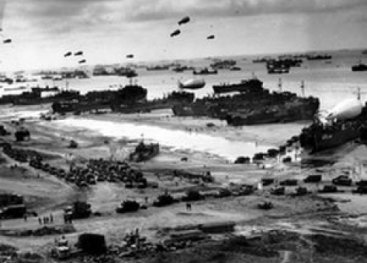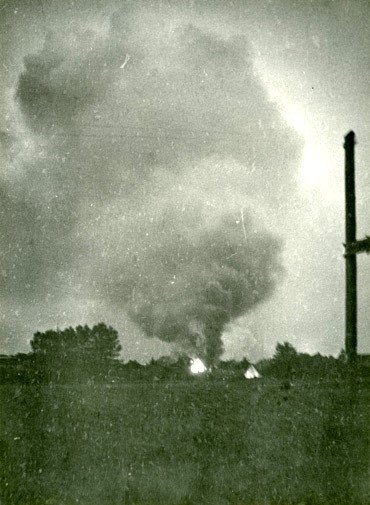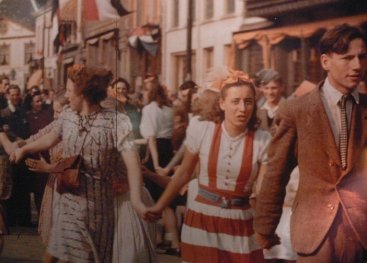
Resistance in the final phase
Resistance grew
During the last winter of the war, resistance grew in spite of the oppression. The railway strike made train transport impossible, so bicycle courier services were set up. The telephone also played an important role in maintaining resistance contacts. Technicians at the Dutch public telephone company (PTT) set up connections outside the normal telephone network.
Antique telephone
Telephone used by the illegal CID [Central Information Service] in Utrecht. After the Germans cut off all normal telephone connections at the end of October 1944, the illegal CID created direct connections between the CID exchanges by welding cables together.
Antique telephones without dials were used to make these direct connections. Four of them hung in the CID office in Utrecht. This enabled Prince Bernhard to make contact with the BS [Interior Forces].]

National Relief Fund

The resistance and the tens of thousands of people in hiding required vast sums of money. The young banker Walraven van Hall had set up the Nationaal Steunfonds [NSF, National Relief Fund] in 1943. In 1944 he received a guarantee from the Dutch government in London, which allowed him to contract large loans with banks and businesses. With help from tax inspectors he was able to collect tax revenues.
The NSF made payments to the resistance totalling 47 million guilders. In addition to this, the illegal press covered its own expenses through the clandestine sale of books, postcards and calendars 'on behalf of the resistance'.
Interior Forces

In September 1944, the three large armed resistance groups LKP, OD and RVV were combined into one army: Binnenlandse Strijdkrachten [BS, Interior Forces].
Prince Bernhard was given supreme command. Weapon drops supplied the BS members with equipment for the expected liberation struggle. Until that time came, they sabotaged German troop transports.
60.000
The BS grew to an army of 60,000, divided into Storm Troops, to be deployed at the front, and Security Troops, who were to maintain order in the liberated area. Uniforms consisted of ordinary blue overalls furnished with arm bands, and Air Raid Defence helmets. Only around 10,000 members of the BS eventually saw active duty.
‘September-knights’
The cooperation between the various groups within the BS was not without its problems. Many so-called Septemberridders (‘September-knights’) also joined: people who joined the resistance only after Dolle Dinsdag (‘Crazy Tuesday’) – with liberation in sight.
The LO announcements publication stated on February 23rd, 1945:
'After September's first flush of victory a flood of people forced their way into the resistance, to the detriment of both our name and our work.'
And in a BS report of September 23rd, 1944:
'My impression is that the KP plans to secure its own power at the expense of the OD.'
Lack of weapons

Sabotage and armed resistance were made more difficult by lack of weapons and explosives. The situation began to change in August 1944 with weapon drops made by the British Air Force. Containers were dropped by parachute from aeroplanes at night.
In this last stage of the war, the resistance was met with harsh reprisals. During the summer of 1944, Hitler decided that from now on resistance would only be suppressed by conducting a reign of terror. Anyone arrested and found armed could be executed without trial.
Death candidates
These Todeskandidaten [death candidates] were kept in prison until a resistance action was carried out. Then they were shot in public as a reprisal. Bystanders were forced to watch. The bodies were left where they lay as a deterrent.

Innocent citizens also became the victims of German retaliatory actions. After an assault on a German car near the village of Putten on October 1st 1944, the entire male population was transported to a concentration camp and the village burned down. In March 1945, the reign of terror reached its peak when more than 200 resistance fighters were executed after an assault on SS- und Polizeiführer Rauter.

